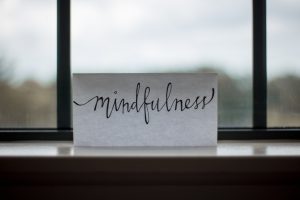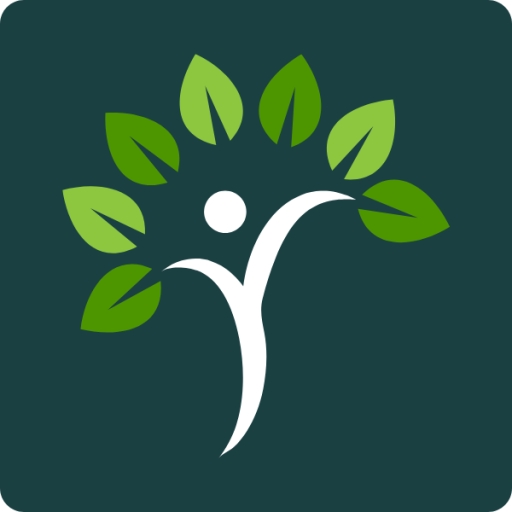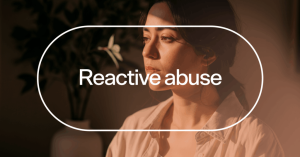By Melyssa Allen
“If you are depressed, you are living in the past. If you are anxious, you are living in the future. If you are at peace, you are living in the present.” -Lao Tzu
“Right now, we are living in unprecedented times among a global pandemic” – something we have heard many times over the past few months during 2020! With so much uncertainty regarding the situation with COVID-19, it can be easy to notice our minds wandering into thinking about things from the past that we aren’t able to do safely right now.
Examples can include attending concerts, sporting events, weddings… or thinking about the future and feeling overwhelmed or anxious about plans or loved ones such as trips being cancelled, the safety of your family, and so much more.
It’s completely normal for our minds to drift into past- or future-oriented thinking, but it can become a problem if we get “stuck” in those thought spaces. Especially during these times of COVID-19, you may notice yourself constantly worrying about the future which can increase stress levels and weaken your immune system.
While mindfulness works well to help us get “unstuck” from those unhelpful thought spaces of past- and future-thinking, the more you practice over time – the more you will notice that you are starting to live more mindfully…but what does that mean exactly?
You will be able to bring yourself off of “auto-pilot,” notice the beauty in the every day, and begin to enhance your life through appreciation of the present moment…but first – let’s just introduce a bit more about mindfulness!

Jon Kabat Zinn, founder of the Mindfulness-Based Stress Reduction program, defines mindfulness as “awareness that arises through paying attention, on purpose, in the present moment, non-judgmentally.” Mindfulness can be a tool to help notice when we’ve gotten stuck thinking about the past or future and help to reorient our attention back to the present moment.
There are many types of mindfulness practices that can be used to help keep you grounded in the present moment, and it is important to point out that it is considered a “practice” because (unfortunately) you can’t just decide to begin practicing mindfulness and then find that you are now constantly living in the present moment.
The first step is bringing the awareness to when your mind has wandered and then refocusing your attention back to the present moment, non-judgmentally. All of this is much easier said than done, but I can tell you from personal experience and from clients that I have worked with in the past – mindfulness can completely change the way you live, if you decide to keep showing up for yourself and practicing over and over (and over!) again.
As a brief introduction to different types of mindfulness, there are formal and informal practices. Formal practices require you to set aside time to dedicate to mindfulness, such as a seated meditation, whereas informal practices incorporate mindfulness into activities, such as walking.
Below I have shared some of my favorite formal and informal mindfulness practices, but it’s important to remember that we are all unique! What works well for me, may not work well for you – but there are MANY other techniques that I have not covered here. Often times, you will need to become your own “experiment” to try out different practices to find which ones work best for you.
3 Formal Practices of Meditation
#1 Seated Meditation
My recommendation for formal practices is to start small! Set a timer for anywhere between 2-5 minutes and find a comfortable seated position with a tall spine and follow the steps below.
Relax your body and try to find where you most strongly connect with your breath: as it enters and exits the nostrils or with the rise and fall of the chest or abdomen. 
Take a few moments to explore these different areas of the body and where you can feel the breath the strongest. Observe your breathing – notice each time you breathe in and out. Remember, whether you are only able to focus for 5 seconds or the whole 5 minutes – it’s okay!
The important part is noticing when our mind has wandered, and finding a way to softly, patiently, and gently refocus your attention back to connecting with the breath.
When the timer goes off, begin to soften your awareness from the breath and allow your surroundings to slowly come back into your attention. When you feel ready, allow the eyes to open softly and bring gentle movement back to the body through small stretches.
#2 “Mindful Minute” Deep Breathing
By taking deep breaths into the abdomen, we allow our body’s relaxation response to become more activated which can further suppress our stress response. Set a timer for 60 seconds and then begin taking long, slow, deep breaths into the belly – counting each inhale/exhale as one breath.
Continue counting how many deep breaths you are taking until the timer goes off, and then remember that number so you will be able to take a “mindful minute” wherever you are!
#3 Body Scan Meditation
This practice is helpful in building more awareness between your mind-body connection. Read the instructions below for an example of the body scan meditation:
-
- Find a comfortable position
- Begin with a scan of your entire body either starting at the top of the head or the feet and just begin to make observations about any sensations you feel without judgment as you move your attention from one area to the next. As you begin the body scan, try to relax each body part as you bring it to mind and focus your attention.
- Remember that your mind will wander, and that is okay – just patiently and compassionately refocus your attention back to the body, wherever you remember your attention was last focused.
- It’s important to note that you may not feel any particular sensations in the body, and that’s okay too! Just notice the absence of sensation as you go through the body scan meditation.
3 Informal Practices of Meditation
#1 Mindful Coloring
Maybe as a child you enjoyed coloring books, and you may still enjoy them as an adult! There are many books and online pages available that have repetitive patterns to help provide a mindful activity through coloring in the pages.
Allowing yourself to focus your attention on the colors you are using, staying within the lines, and having uniform strokes with your colored pencils, crayons, or markers, is a wonderful way to stay connected to the present moment!
#2 Mindful Walking
Instead of scrolling through your phone next time you are out on a walk, try observing the world around you and noticing things you normally wouldn’t pay any attention to: how the sun or breeze feels on your skin, watching the birds fly in the sky, finding tiny ants walking along the sidewalk, new flowers blooming on the trees around you.
Often times we can get so consumed by our thinking or distracted by our electronics that we may be missing out on some of life’s beautifully simple moments happening all around us.
#3 Mindfully Drinking My Morning Coffee
This one has become one of my favorites to use during quarantine, because many times I was quickly drinking my coffee on the way to work and didn’t take the time to truly enjoy it. Since things slowed down, I made a conscious effort to drink my morning coffee in a mindful way.
 And example of drinking mindfully would be to notice the aroma of the coffee as it brewed, how the color changed as I added cream and stirred it, the warmth of the mug as my hands wrapped
And example of drinking mindfully would be to notice the aroma of the coffee as it brewed, how the color changed as I added cream and stirred it, the warmth of the mug as my hands wrapped
around it, and the satisfying taste of the first sip and following it as it traveled down my throat and into my belly (I’m not sure about you, but that was already making my mouth water as I read that over!).
If you are not a coffee fan, you can try this with other beverages like tea, sparkling water, or even a glass of wine! Taking the time to mindfully enjoy your favorite beverage not only turns it into an experience, but it allows you to savor each and every sip you take instead of distractedly rushing through the drink without allowing yourself to enjoy it.
There are MANY other types of formal/informal mindfulness practices that I didn’t cover here, but you can explore them through a variety of free resources – a quick Google search will provide you with links YouTube videos, helpful websites, and many apps that can help you develop a mindfulness practice that suits you!
I have included links to a few of my favorite mindfulness resources below to help get you started.
If you would like to take a deeper dive into using mindfulness as a stress management strategy and tool to help build resilience, I would be honored to help guide you through developing your own mindfulness practice in either individual or group sessions.
My next Mindfulness-Based Stress Reduction group dates will be released soon and if you would like more information or to be notified when registration opens, please make sure to email info@lifecounselingsolutions.com or call the office at (407) 622-1770.
RESOURCES
- “The Power of Mindfulness: What you practice grows stronger” TED Talk by Dr. Shauna Shapiro
- Palouse Mindfulness: Mindfulness-Based Stress Reduction
- Getting Started with Mindfulness
- Mindfulness, Psychology Today
- Mindful Eating Script
- Deep Breathing Exercise, TherapistAid
- 3-Minute Body Scan Meditation, HeadSpace
 Melyssa previously worked as an animal trainer before attending graduate school to pursue mental health counseling, and has volunteered as a Pet Therapy team with her dog, Buddy, over the past four years. She works with clients to identify their strengths and sets therapy goals with clients that simultaneously helps them build confidence in their abilities while challenging them to grow. She also incorporates a lifestyle and mind-body focus to help clients promote physical, mental, and emotional wellness. To learn more about Melyssa visit her full profile here.
Melyssa previously worked as an animal trainer before attending graduate school to pursue mental health counseling, and has volunteered as a Pet Therapy team with her dog, Buddy, over the past four years. She works with clients to identify their strengths and sets therapy goals with clients that simultaneously helps them build confidence in their abilities while challenging them to grow. She also incorporates a lifestyle and mind-body focus to help clients promote physical, mental, and emotional wellness. To learn more about Melyssa visit her full profile here.






